◂Math Worksheets and Study Guides Seventh Grade. Numerical Proportions
Study Guide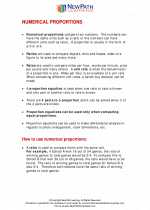 Numerical Proportions
Numerical Proportions  Worksheet/Answer key
Worksheet/Answer key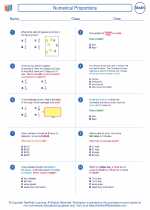 Numerical Proportions
Numerical Proportions  Worksheet/Answer key
Worksheet/Answer key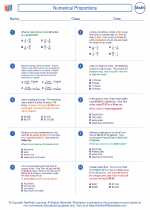 Numerical Proportions
Numerical Proportions  Worksheet/Answer key
Worksheet/Answer key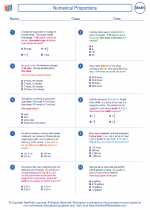 Numerical Proportions
Numerical Proportions  Worksheet/Answer key
Worksheet/Answer key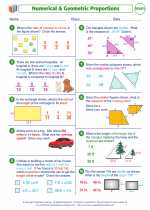 Numerical & Geometric Proportions
Numerical & Geometric Proportions 

 Worksheet/Answer key
Worksheet/Answer key
 Worksheet/Answer key
Worksheet/Answer key
 Worksheet/Answer key
Worksheet/Answer key
 Worksheet/Answer key
Worksheet/Answer key

The resources above cover the following skills:
Number and Operations (NCTM)
Understand numbers, ways of representing numbers, relationships among numbers, and number systems.
Understand and use ratios and proportions to represent quantitative relationships.
Compute fluently and make reasonable estimates.
Develop, analyze, and explain methods for solving problems involving proportions, such as scaling and finding equivalent ratios.
Measurement (NCTM)
Apply appropriate techniques, tools, and formulas to determine measurements.
Solve simple problems involving rates and derived measurements for such attributes as velocity and density.
Grade 7 Curriculum Focal Points (NCTM)
Number and Operations and Algebra and Geometry: Developing an understanding of and applying proportionality, including similarity
Students extend their work with ratios to develop an understanding of proportionality that they apply to solve single and multi-step problems in numerous contexts. They use ratio and proportionality to solve a wide variety of percent problems, including problems involving discounts, interest, taxes, tips, and percent increase or decrease. They also solve problems about similar objects (including figures) by using scale factors that relate corresponding lengths of the objects or by using the fact that relationships of lengths within an object are preserved in similar objects. Students graph proportional relationships and identify the unit rate as the slope of the related line. They distinguish proportional relationships (y/x = k, or y = kx) from other relationships, including inverse proportionality (xy = k, or y = k/x).
Connections to the Grade 7 Focal Points (NCTM)
Measurement and Geometry: Students connect their work on proportionality with their work on area and volume by investigating similar objects. They understand that if a scale factor describes how corresponding lengths in two similar objects are related, then the square of the scale factor describes how corresponding areas are related, and the cube of the scale factor describes how corresponding volumes are related. Students apply their work on proportionality to measurement in different contexts, including converting among different units of measurement to solve problems involving rates such as motion at a constant speed. They also apply proportionality when they work with the circumference, radius, and diameter of a circle; when they find the area of a sector of a circle; and when they make scale drawings.
Number and Operations: In grade 4, students used equivalent fractions to determine the decimal representations of fractions that they could represent with terminating decimals. Students now use division to express any fraction as a decimal, including fractions that they must represent with infinite decimals. They find this method useful when working with proportions, especially those involving percents. Students connect their work with dividing fractions to solving equations of the form ax = b, where a and b are fractions. Students continue to develop their understanding of multiplication and division and the structure of numbers by determining if a counting number greater than 1 is a prime, and if it is not, by factoring it into a product of primes.